Eleven 16-inch direct-to-disc acetates of studio recording sessions and Jazz at the Philharmonic recordings, organised by producer Norman Granz, 1944-1953
28.09.2023 13:00UTC +00:00
Classic
Vendu
3276GBP £ 3 276
| Auctioneer | CHRISTIE'S |
|---|---|
| Lieu de l'événement | Royaume-Uni, London |
| Commission | see on Website% |
Archive
La vente aux enchères est terminée. Vous ne pouvez plus enchérir.

ID 1016428
Lot 166 | Eleven 16-inch direct-to-disc acetates of studio recording sessions and Jazz at the Philharmonic recordings, organised by producer Norman Granz, 1944-1953
Valeur estimée
£ 3 000 – 5 000
Ella Fitzgerald, Lester Young, Coleman Hawkins and John Birks “Dizzy” Gillespie
Ella FITZGERALD (1917-1996), Lester YOUNG (1909-1959), Coleman HAWKINS (1904-1969) and John Birks “Dizzy” GILLESPIE (1917-1993).
Eleven 16-inch direct-to-disc acetates of studio recording sessions and Jazz at the Philharmonic recordings, organised by producer Norman Granz, 1944-1953.
Many of Norman Granz’ studio recording sessions pre-dated the wide use of magnetic tape for mastering. Sessions were recorded direct-to-disc on heavy lacquer coated aluminium discs, known as acetates. As the lacquer discs were expensive to produce, the engineer would record multiple takes on each disc. The producer would choose a master take for each song and use these ‘masters’ to cut the parts to press a finished record. These eleven direct-to-disc acetates include a number of master takes and alternate takes. As magnetic tape superseded direct-to-disc as the dominant recording format, Granz transferred his masters to tape, and the original lacquers were shelved. Horrified at the request to dispose of the superfluous session acetates in the late 1960s, Granz’ then assistant Eric Miller requested to keep them, to which Granz replied ‘Sure, it’ll give you something to do in your retirement.’
A number of the acetates were made during recording sessions for Norman Granz and Gjon Mili’s 1950 film project Improvisation and its predecessor Jammin’ The Blues. Granz and innovative Life magazine photographer Gjon Mili collaborated to shoot what many consider the greatest jazz film ever made – the 1944 Warner Bros. short Jammin’ The Blues. Nominated for an Academy Award for Best Short, the film gathered Lester Young and other prominent 1940s jazz musicians to recreate a jam session on film. Six years later, around September 1950, Mili and Granz shot footage and recorded audio for a sequel with members of the 1950 Jazz at the Philharmonic unit, including Lester Young and Ella Fitzgerald. One factor complicating the production was the difficulty of synching the film with the audio. Improvisation was shot in Mili’s New York studio, which was not sound-proofed, so the audio track had to be laid down in a separate studio, ahead of filming. According to Tad Hershorn, ‘the production was hampered by a shortage of funds that precluded the multiple cameras necessary to properly film and record the event simultaneously… “We pre-recorded, [Granz said in 1987], and then we tried to match it later on by shooting to it. But it really didn’t work.” In particular, Rich and Fitzgerald’s performances eluded the filmmakers’ attempt to synchronise image and sound. This footage, whose fate was the source of intense speculation for decades, was finally released in 1996 under the title Improvisation, a compilation of performances from the 1950s through the 1970s.’ Despite its shortcomings, Improvisation is a historically significant film for containing only the second film clip of Charlie Parker known to exist, and his only recorded musical meeting with Coleman Hawkins. Hershorn, 152-53.
Eleven 16-inch acetates, nine of the discs unlabelled but variously numbered and inscribed with chinagraph pencil, with original brown paper sleeves, variously inscribed in pencil with the client ‘Norman Granz’, artist, track titles, matrix and take numbers, some dated, with later annotations in felt pen, the records comprising:
- Ella Fitzgerald sessions for Improvisation, two single-sided and one double-sided acetate, recorded in New York, circa September 1950, with Lester Young, Hank Jones, Bill Harris, Ray Brown, Buddy Rich, Flip Philips, Harry “Sweets” Edison, the unreleased takes include: Untitled Scat, Perdido, Untitled Scat, Someone To Watch Over Me, I Only Have Eyes For You, together with a master take of Blues for Greasy, as used in the film. Miller notes that the DVD release of the film features silent footage of the performances of Someone To Watch Over Me and I Only Have Eyes For You.
- Lester Young sessions for Improvisation, double-sided acetate, recorded in New York, circa September 1950, with Bill Harris, Hank Jones, Ray Brown and Buddy Rich. Side A – Pennies From Heaven, one master take, used in Improvisation, one alternate take, Side B – Ad Lib, one master take, used in Improvisation, two alternate takes.
- Lester Young sessions for Jammin’ The Blues, double-sided acetate, the yellow label fragment with partial typewritten title ‘Jammin’ The Blu-’, recorded in Los Angeles, 1944, with Harry “Sweets” Edison, Dicky Wells, Marlowe Moris, Barney Kessel, John Simmons and Jo Jones. Side A – Sweet Georgia Brown, unreleased, not used in the film; Sunny Side of the Street, master take, used in the film Jammin’ The Blues; Jammin’ The Blues Theme (no vocal). Side B – Blues, recorded live in 1953, location unknown, unreleased.
- Lester Young, two double-sided and one single-sided acetate, featuring master recordings for five of the eight tracks released on the albums The Lester Young Trio (1951) and The Lester Young Trio No.2 (1953), recorded in Los Angeles, March-April 1946, the master takes include: Mean To Me, The Man I Love, I Cover The Waterfront, I Found a New Baby, and Peg O’ My Heart.
- Coleman Hawkins, single-sided acetate, Picasso, one master and one alternate take, recorded sometime between 1946 and 1948 and released in April 1949 on Norman Granz’ deluxe album set The Jazz Scene. Hawkins' contribution to the album was this remarkable solo piece – the first recorded unaccompanied piece by a jazz saxophonist.
- Coleman Hawkins and Oscar Peterson, double-sided acetate, recorded for Jazz at the Philharmonic, Carnegie Hall, New York, 17-18 September 1949, the white ‘Carnegie Hall Recording Co. labels with typewritten details, crediting Peterson only as ‘Pianist’. Side A – Oscar Peterson with Ray Brown, Fine and Dandy and I Only Have Eyes For You. Side B – Coleman Hawkins with Hank Jones, Ray Brown and Buddy Rich, Body and Soul, Rifftide, Sophisticated Lady, Stuffy, Blues.
- Dizzy Gillespie, double-sided acetate, recorded for Jazz at the Philharmonic, Carnegie Hall, New York, 21 June 1946. Side A – Dizzy’s Blues, unreleased take. Side B – The Man I Love, unreleased take;
housed in a custom black cloth slipcase. Provenance: Norman Granz (1918-2001; record producer) – Eric Miller (1941-2017; Granz’ assistant and protégé)
Further details
These recordings are offered for sale without copyright, broadcast rights, performers consents and other reproduction rights. The buyer must apply to the relevant parties to obtain such clearance and consents as may be necessary.
| Adresse de l'enchère |
CHRISTIE'S 8 King Street, St. James's SW1Y 6QT London Royaume-Uni | |
|---|---|---|
| Aperçu |
| |
| Téléphone | +44 (0)20 7839 9060 | |
| Commission | see on Website | |
| Conditions d'utilisation | Conditions d'utilisation |
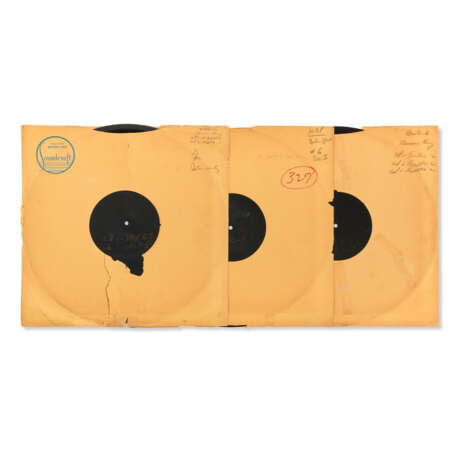




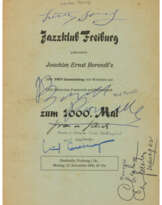
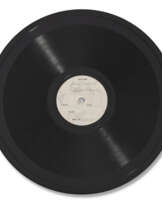
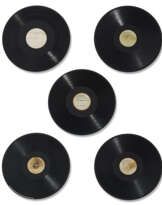
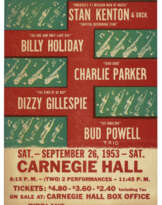
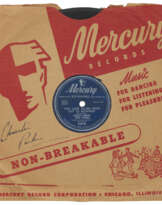
![Rare concert handbill for Dizzy Gillespie and ‘His Sextet featuring Charley [sic] Parker’ at Town Hall, New York, Wednesday 16 May 1945](/assets/image/picture_3072052/23b57/cibsgzqar18fpxqrux3s2u7oixxxbtmom2qqr2v9umvays1xiszpedhzaf25j1692875350jpg__fix_162_205.jpeg)


